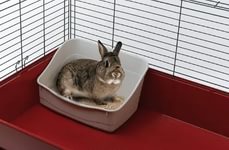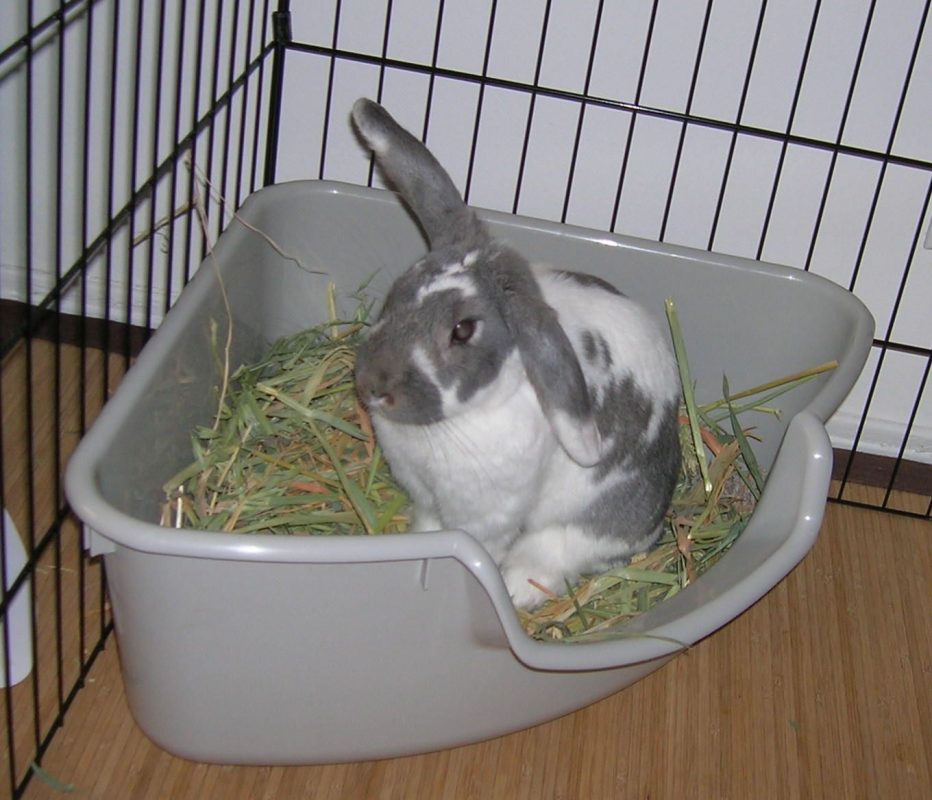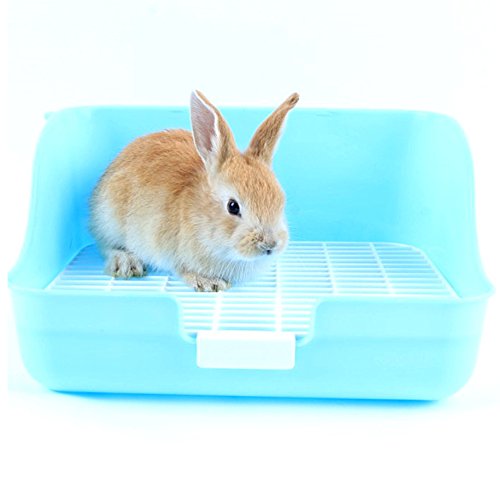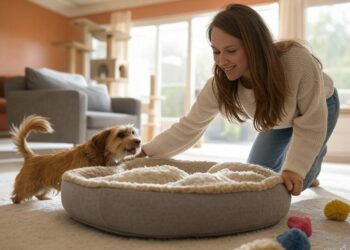Housetraining a rabbit is not that easy. You have to go step by step and take a number of things into account. For example, rabbits that have not been neutered or spayed first are more difficult to housetrain. Unlike a cat, a rabbit is also less likely to instinctively know where it is expected to go on the potty. But if you first take the necessary steps and observe a few rules, it is certainly possible to train and clean your rabbit.
What you need to know in advance
Don’t start too early
Potty training a rabbit can only be done when the animal is an adult. Small breeds mature after three or four months, with larger breeds around seven to eight months. Young rabbits usually have few housetraining skills. Starting training too early, therefore, makes little sense. You can safely wait until your rabbit is ten months old.
Have patience
Also, realize that housetraining a rabbit rarely succeeds overnight. You have to have a lot of patience. Getting mad at the rabbit will not help and will have the opposite effect. Give your pet time to learn and know that several weeks may pass. Some rabbits also learn faster than others.
Step One: Your Rabbit’s Surgery
In addition, you should have your rabbit operated on before you start toilet training. Spaying or neutering your rabbit can be done for six months and has many advantages. One is that you can teach them to use a toilet bowl much easier afterward.
Housetraining a rabbit that has not undergone surgery is an almost impossible task. They then continue to show hormonal and territorial behavior and leave droppings everywhere or spraying urine. An operated rabbit can also do this, but usually, this happens to a much lesser extent.
Step two: buy a few suitable toilet bowls
Use multiple bins
It’s much easier to housebreak your rabbit if you use multiple bins scattered around the living area. The reason for this is that many rabbits do not seem motivated to walk long distances back and forth to their toilet bowl.
Which toilet bowl is suitable for a rabbit?
Litter boxes are often also suitable for a rabbit. These should be low enough so that your pet can easily get in and out of the box. If he has trouble getting in and out, he won’t like to use the bins. Too low is also not good. Rabbits are clean animals by themselves and often like some privacy.
The bowls should be large enough so that your rabbit can sit completely without his poop hanging over the edge. He should also be able to lie comfortably in it because that also promotes toilet training.
Apply ground cover
You fill the boxes with bedding just like you do with your rabbit’s cage. Just make sure you use the right bedding. Not all bedding is safe for rabbits.
Step three: put the toilet bowls in the right places
In the cage
Place the first bowl in the corner of the cage that your rabbit uses as a ‘toilet corner’. The cage should be large enough that there is room for a toilet box in the corner of the cage and still have plenty of room beyond that. If not, the cage you are using is too small.
In the living room
Place the other toilet bowls scattered around the living room, especially in the places where your rabbit often goes. For example, place a bin in each corner of the living room or next to a closet.
Provide hints
Put a few droppings or wetting bedding in the toilet bowls. Often this gives the rabbit a hint as to the purpose of the bowl. Even if the animal does not immediately realize it, the realization often comes after some time. Also, make the toilet bowl a pleasant place for your animal. Put in some hay and toys, or maybe even a little extra like a small piece of carrot.
Step four: housetrain a rabbit konijn
Reward when it works
Once you have placed the bins, you have to make sure that your rabbit also uses them. Keep an eye on your rabbit as much as possible and limit his movement space to one place (for example the living room). When he uses the toilet bowls you should encourage him, tell him how strong he is and caress his head.
Exercise patience when it doesn’t work
If your rabbit is not using the toilet bowl and is defecating on the sofa or on the carpet, clap your hands loudly and loudly and say clearly “No!”. Then place it gently and gently in the toilet bowl. Calling or yelling at your rabbit, slapping, or ‘punishing’ him is absolutely not allowed. Your rabbit will not understand what it has done wrong, become anxious and it will be even more difficult to house train the animal from now on.
Step five: be patient and clean up accidents quickly
Help, my rabbit is sleeping in his toilet bowl!
Sometimes you will notice that a rabbit uses its toilet bowl as a bed and stretches out in it while resting or even sleeping. Don’t worry about this at all. Many rabbits do this. It does not affect their potty training. It’s even positive because it means your rabbit likes to be in the box.
To clean
Cleaning is also crucial when trying to housetrain your rabbit. If he puts droppings or sprayed urine somewhere outside the toilet box and you remove it, your rabbit may return to the same place over and over because he still smells odors from last time. For example, your rabbit may mistakenly think that this is the right place for his need. Clean the area with some vinegar and water on a cloth.
Success!
After a few weeks, you will notice that your rabbit will use the toilet bowls more and more easily. Once it goes smoothly, you can remove bins and ultimately only have one toilet bin left. Your rabbit should now be using it smoothly.









